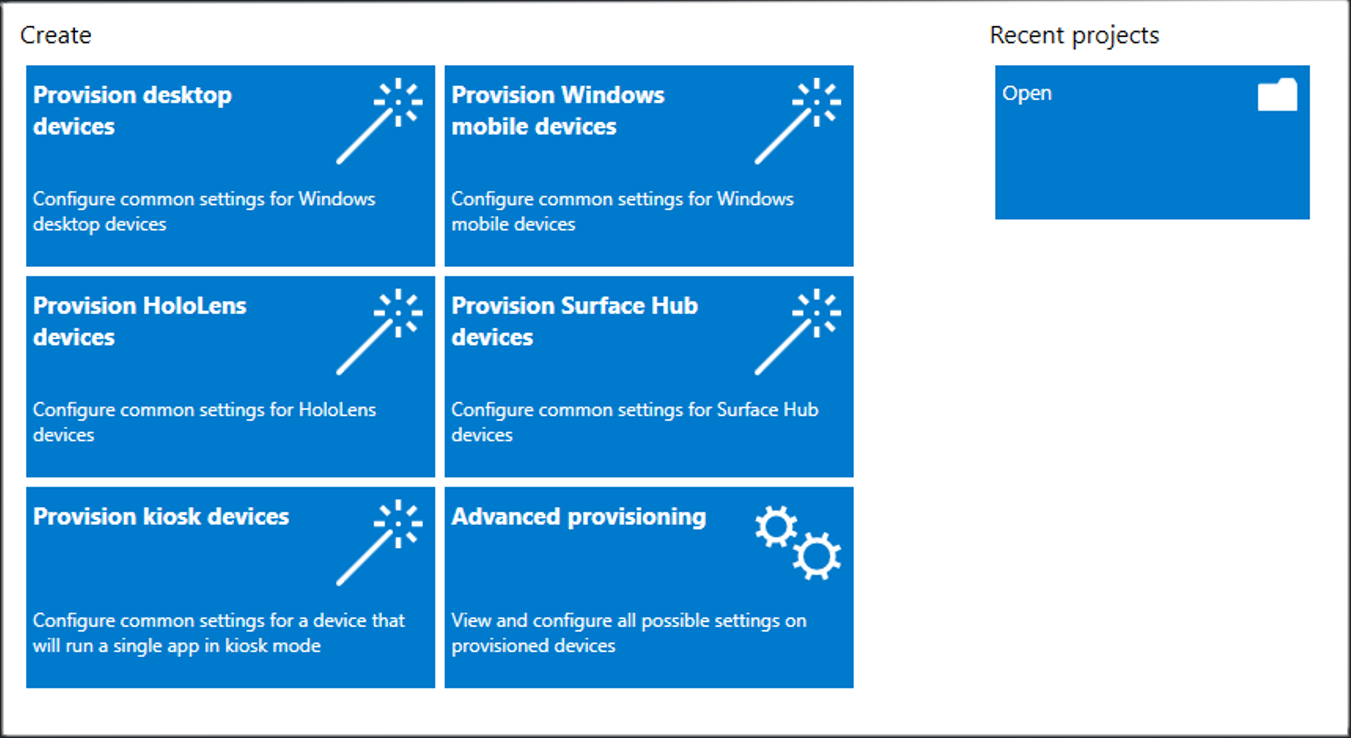Windows 10 Provisioning Packages

The Problem
On occasion (or perhaps, even often) IT organizations need to quickly provision a device for use within the larger organization. This is a particular challenge with consumer grade devices or in BYOD (Bring Your Own Device) programs.
Ensuring management and security tools are installed, backups are in place, and setting up devices as kiosks are all unique challenges businesses and institutions face.
The (Faster) Solution
A few weeks ago, we began testing provisioning packages. These are bundles of applications and settings that can be installed on a Windows 10 device during the OOBE (Out Of Box Experience) screens via a USB drive or network share.
We began testing them, though, with the idea that they could potentially replace monolithic imaging for use in the same way that Apple's DEP (Device Enrollment Program) purports to do with regard to Apple products. Unbox, install the provisioning package, and you're done!
And for a small business, that might well be perfect. No SCCM, no MDT, no PXE, no nonsense.
But Does It Work, Really?
But in higher education, things are more complicated. What do we do about different departments that have highly unique needs? What about the cost considerations of being forced to pay for a Windows license with the computer itself (our channel partner gives us the option to ship with Ubuntu, which shaves off $100 per machine since we have volume imaging rights)?.
Ultimately, we decided to reserve these little packages for when we had a situation that required us to do some setup on a BYOD computer we'd normally have to do manually - configure licensing for our version of Office, install antivirus, etc.
Provisioning packages are definitely in the back of my mind, though, and we'll see if Microsoft advances this tech come Ignite in September.
